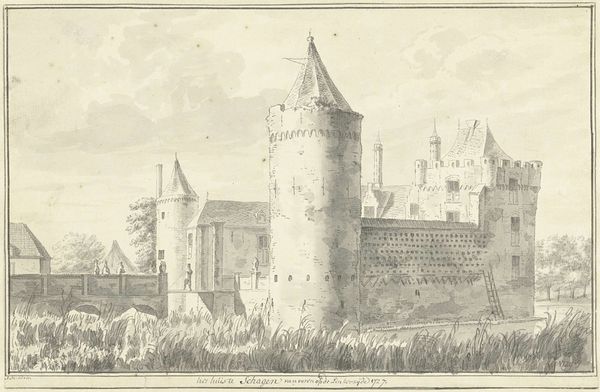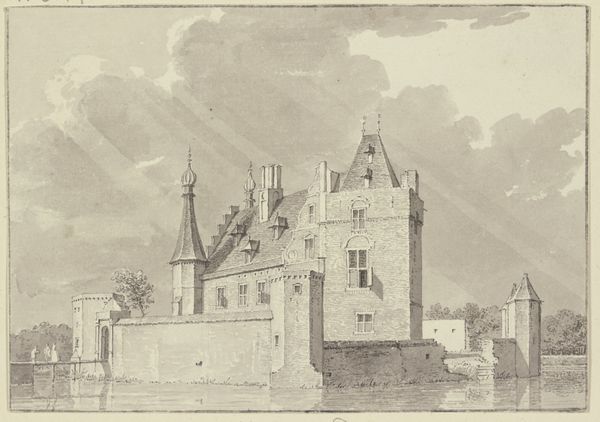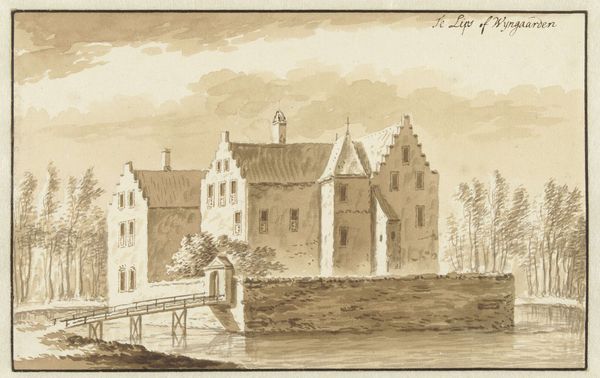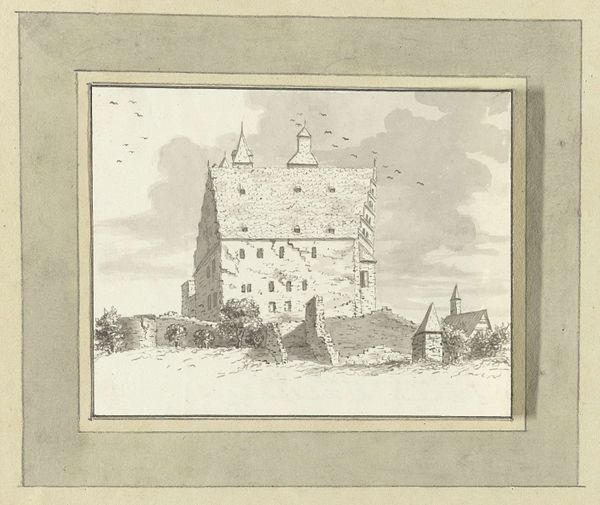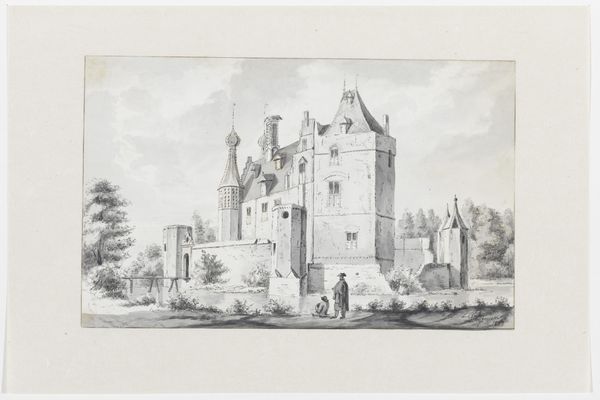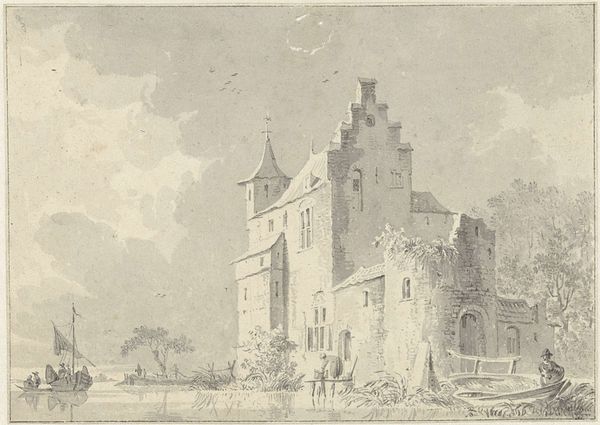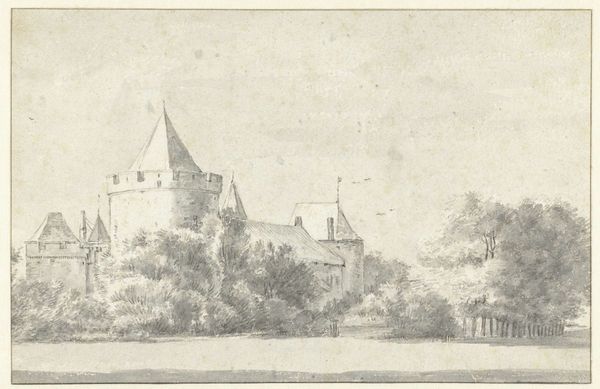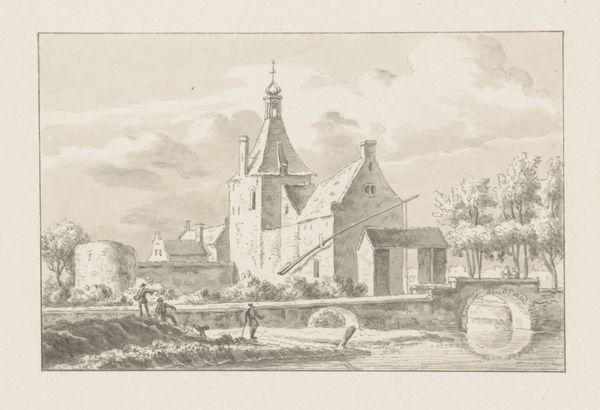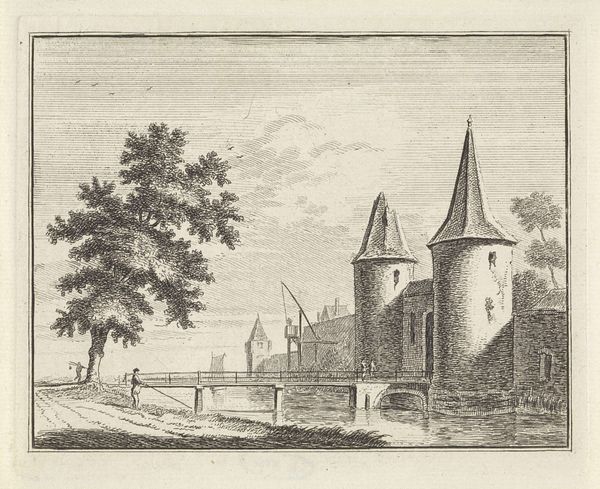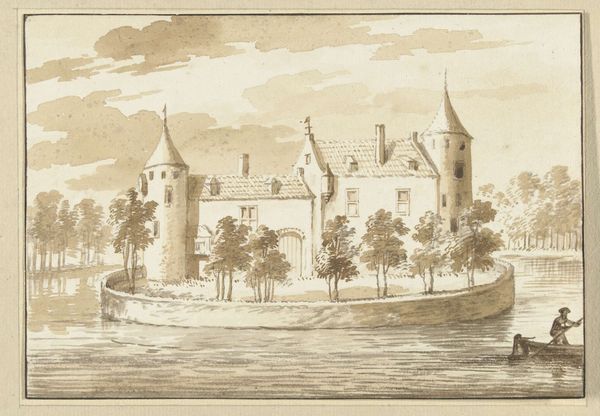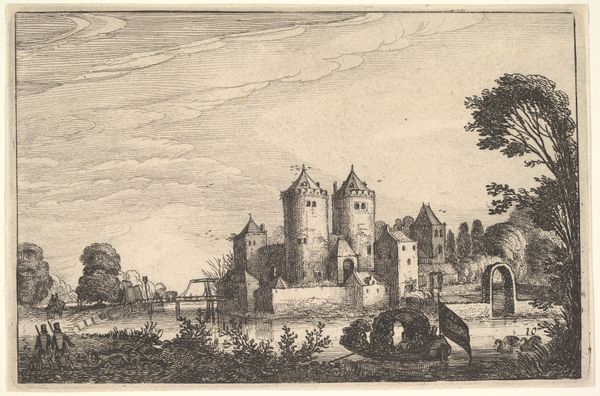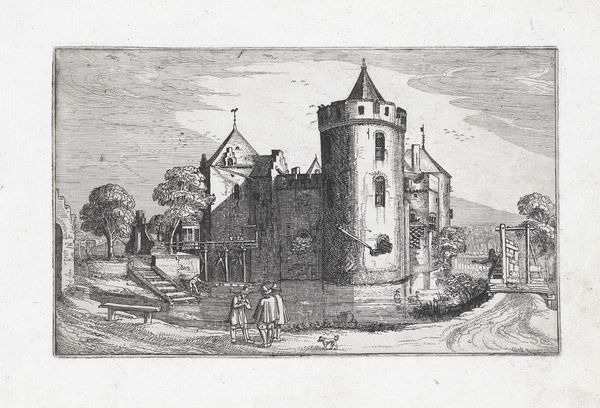
drawing, paper, ink, pencil, architecture
#
drawing
#
baroque
#
landscape
#
paper
#
ink
#
pencil
#
architecture
Dimensions: height 154 mm, width 223 mm
Copyright: Rijks Museum: Open Domain
Editor: So, here we have "Kasteel," a drawing from sometime in the 1700s, created with pencil, ink, and paper. What immediately strikes me is how the artist has framed this castle in its landscape, including a lone painter and a small boat. How would you interpret the social context around the imagery? Curator: This drawing gives us a window into how castles, and by extension, power, were being perceived in the 18th century. Instead of portraying the castle as imposing and invincible, Daams renders it almost as a picturesque ruin. The presence of the artist sketching suggests the growing importance of observation and documentation that aligned with Enlightenment ideals. The artist on the bank is, in a sense, claiming a new type of ownership – aesthetic ownership, separate from any claim of property or history by the landed gentry. How might the depiction differ if commissioned by the castle owner? Editor: That's interesting. If commissioned, the drawing might be more grand, emphasizing the castle's structural integrity and its commanding presence. I guess showing it as slightly crumbling or in decay indicates a shift away from that display of power. Does the presence of everyday people like those in the boat contribute to this shift as well? Curator: Precisely! They are no longer simply background figures accentuating the castle's importance, they are part of a changing social landscape, interacting with and even to an extent, domesticating, this symbol of aristocratic power. We begin to see a world where castles aren’t just centers of authority, but also elements of a wider landscape to be experienced and appreciated. Editor: That's such a helpful perspective. I initially saw just a pretty landscape, but understanding the historical and social context really changes my view of it. Thank you! Curator: And now you have made me consider that the ‘everyday’ in this context perhaps serves as commentary on the evolving identity and status of the landed gentry in this period.
Comments
No comments
Be the first to comment and join the conversation on the ultimate creative platform.
